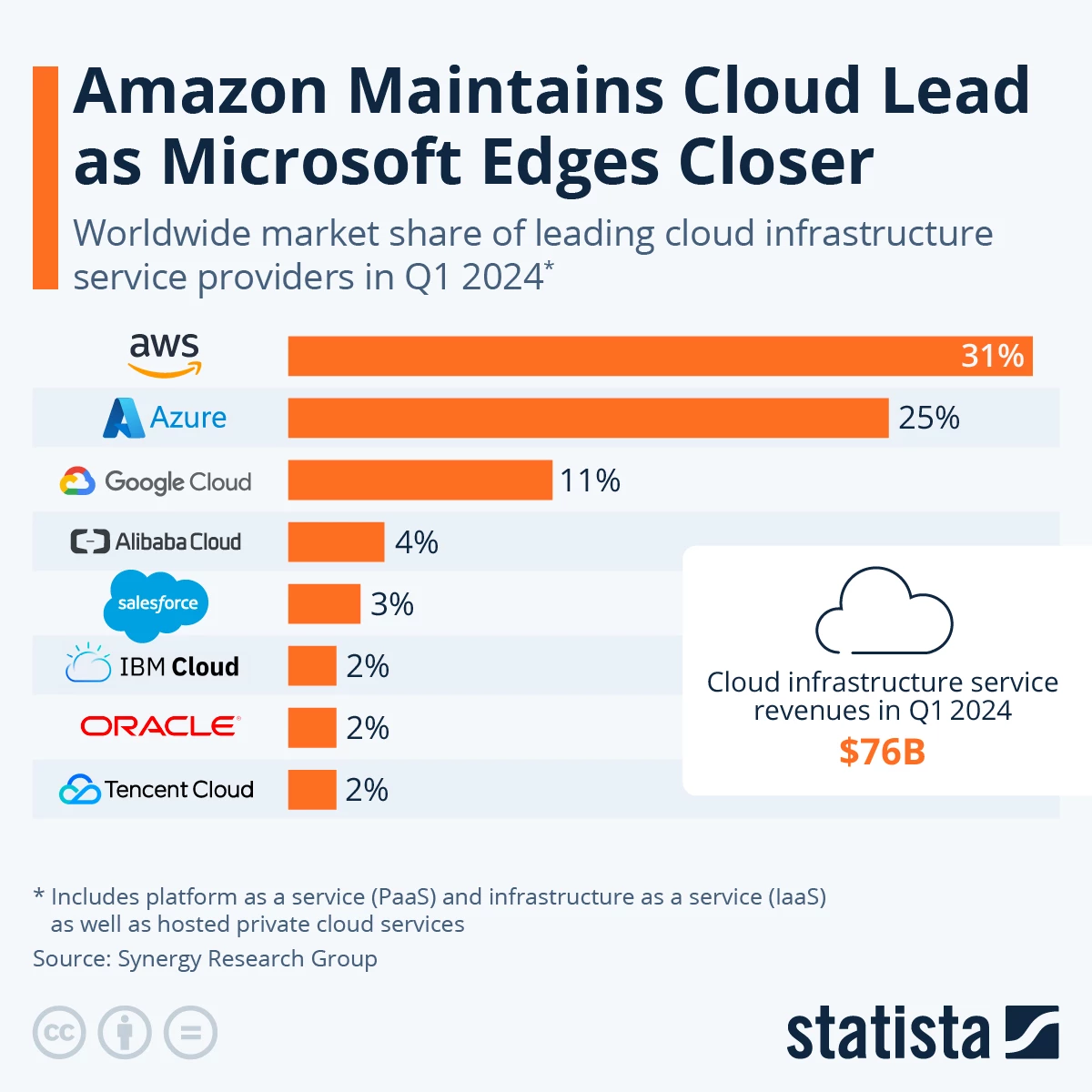AWS Breakdown: Exploring Cloud Infrastructure
If you're considering shifting your data to the cloud or simply want to learn more about AWS and what it does, you've come to the right place. With everything a beginner needs to know about AWS, we're going to get back to basics in this blog. This blog is a must-have for anyone new to cloud computing who wants to learn more about AWS's capabilities. It covers how AWS operates, what you can do with it, who uses it, and more.
Exploring AWS: Origin and Beginning
AWS is a complete cloud computing platform that is offered by Amazon.com. It offers a wide range of infrastructure services and solutions to people all over the world, including enterprises, government agencies, and individuals.
In 2006, Amazon Web Services was officially launched, marking a significant milestone in the evolution of cloud computing. Amazon's desire to democratize access to advanced computing resources and empower businesses of all sizes to benefit from cloud computing has led to the creation of AWS.

AWS officially launched its first service, Amazon S3 (Simple Storage Service), in March 2006, followed by Amazon EC2 (Elastic Compute Cloud) in August of the same year. These foundational services laid the groundwork for AWS to expand its offerings and establish itself as a leader in the cloud computing industry.
What is AWS technology?
AWS technology is its global network of data centers, strategically located in regions and availability zones around the world. These data centers are equipped with state-of-the-art hardware, networking equipment, and security measures to ensure high availability, low latency, and data redundancy.
Amazon Web Services (AWS) uses virtualization to provide customers with on-demand access to computing resources over the internet, including virtual servers and storage and networking. AWS virtualization services, such as AWS Elastic Compute Cloud (EC2), allow customers to provision instances (or virtual servers) over the internet in minutes, selecting from a range of instance types that are optimized for various workloads and operating systems, as well as performance requirements.
Amazon Web Services (AWS) also offers managed database services, such as Amazon Relational Database Service (Amazon RDS) or Amazon DynamoDB. These services remove the administrative burden of managing databases and offer automated backups, scaling and maintenance.

Read the detailed Report Here www.statista.com
In addition, AWS continues to invest in new technologies, including AI, ML, IoT, and edge computing. AWS also provides a suite of tools and services to help customers leverage these technologies and innovate.
According to estimates from Synergy Research Group, Amazon’s market share in the worldwide cloud infrastructure market amounted to 31 percent in the fourth quarter of 2023, down from 33 percent a year earlier.
All in all, AWS technology is the result of decades of development and innovation in cloud computing, allowing businesses to create, deploy and scale applications with unprecedented flexibility, agility and scalability. Whether you’re a start-up, an enterprise or a government organization, AWS provides you with the tools, infrastructure and knowledge to succeed in today’s digital world.
Start your project on the right foot
A project discovery stage can help you avoid building the wrong product, and we can help you get the discovery stage right. Let’s start with a free call.
Benefits of using AWS
Flexibilty
Companies can customize the operating system, database, programming language, or any other component of their virtual environment to meet their particular needs. The cloud migration process should be as seamless as possible, especially given the current environment, and AWS makes that possible.
Unlimited Server Capacity
One of the main reasons AWS has risen to the top of the cloud computing market is the unlimited storage capacity it provides. In order to keep operating, over a million organizations rely on this service globally. No matter how big or little your computing needs are, AWS can easily handle them for you, whether you're a major business or a small startup.
Security
Data stored on AWS is safeguarded by a more reliable and strong security system. AWS uses security protocols including infrastructure safety measures, data security (including access control and user authentication), anticipatory and persistent threat monitoring, personal information protection, and regulatory compliance.
Incredibly Diverse Array of Tools
Regardless of how simple or sophisticated your demands are, the AWS platform can meet them. Because all of your demands can be handled on a single platform.AWS offers developer tools to help with quick application development, deployment, and administration.
Management Console
In simplest terms, the AWS management console is a location from which you are able to manage everything on the cloud. It is a web-based interface that gives users an easy method to interact with and administer their AWS resources. The AWS administration portal helps users maximize their AWS services by saving time when compared to standard command-line interfaces.
Integration
AWS offers a vast array of services that are simple to incorporate into the infrastructure of businesses already. This removes the need for major modifications or the purchase of new hardware or software, allowing firms to add new features and capabilities. With the aid of these technologies, companies can create and release mobile apps that interface with their current infrastructure quickly.
Is AWS worth it?
In conclusion, AWS offers a compelling suite of cloud services and solutions that cater to the diverse needs of businesses worldwide. Its market leadership, robust technology stack, reliability, scalability, security, and extensive ecosystem make it a top choice for organizations seeking to harness the power of the cloud. Whether you're a startup looking to scale rapidly, an enterprise seeking agility and cost savings, or a developer innovating with cutting-edge technologies, AWS provides the tools and infrastructure to drive your success in the digital age.